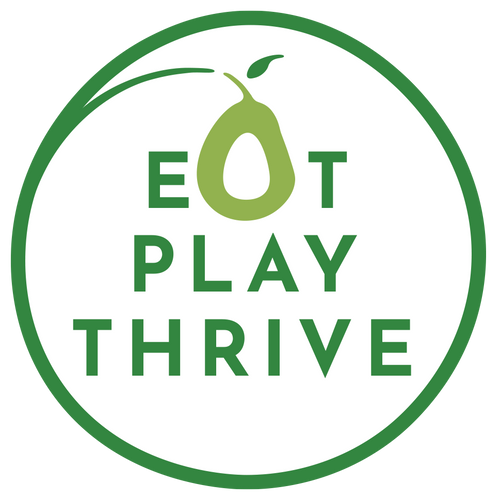
With the arrival of fall, nature offers a wonderful selection of seasonal produce that can bring both flavor and nutrition to your family's table. From the delightful crispness of apples to the hearty richness of squash, these autumn offerings provide not only delicious meals but also essential nutrients. It’s a great time to offer up varieties of apples, squash and pears to your kids when they are in the peak of their season so they can enjoy every delicious bite. In this blog post, I’m going to dive into some of the nutritional benefits and also share some preparation ideas recipes to help you and your family enjoy the season's offerings.
Apples: A Fiber-Rich Delight
Autumn's apple orchards beckon with their sweet, crisp fruits. Try the different varieties with your kids this fall and if apples aren't your child's favorite, try mixing up the preparation - slices, shredded or spiralized, as applesauce, or just given whole (I find younger kids who haven't had apples this way, love to try it). Apples are an easy affordable snack and they come bearing gifts of nutrition:
- Dietary Fiber: Apples are an excellent source of dietary fiber, particularly a soluble fiber called pectin, aiding in digestion and promoting a sense of fullness.
- Vitamins: They provide essential vitamins like vitamin C, contributing to a strong immune system.
- Antioxidants: Apples contain a variety of antioxidants, including quercetin, catechin, phloridzin and chlorogenic acid to support brain health, prevent cancer and reduce inflammation.
Recipe Idea: Try a warm bowl of apple cinnamon oatmeal to give you kids a hearty and nutritious breakfast.
Winter Squash: Iconic Fall Superfoods
There are many types of winter squash that pop up this time of year, all with different characteristics. From the sweeter butternut, delicata and honey nut squash to more nutty varieties like acorn squash and kabocha squash. You can even make a pasta dish, with the noodle-like spaghetti squash. In this blog post, I wanted to highlight two popular and easily accessible squash varieties, but the options extend well beyond butternut and pumpkin.

Butternut Squash
First up is butternut squash. It’s sweet but also extremely versatile. It’s perfect for roasting and sautéing, or using in purées or soups. This yummy squash adds a touch of autumn's golden hues to your plate while delivering a wealth of nutrients:
- Vitamin A: Butternut squash is rich in beta-carotene which the body converts to Vitamin A and is essential for healthy vision and immune function.
- Fiber: Its fiber content supports digestive health and helps maintain stable blood sugar levels.
- Other Vitamins: It’s a good source for vitamin C, helping boost your child’s immune system this fall, as well as vitamin E and many B vitamins.
Recipe Idea: Roast butternut squash with a drizzle of olive oil, a pinch of salt, and a sprinkle of sage for a delectable side dish.
Pumpkins
The other winter squash I wanted to highlight is the pumpkin. Pumpkins are not just for carving! Typically you want to use sugar pumpkins for cooking or baking, in everything from soups to curries to pasta dishes and of course pies! In addition to being a tasty fun food to feed your kids this fall, they're also a superfood loaded with nutrition:
- Vitamin A: They're also high in beta-carotene, which the body converts to vitamin A.
- Fiber: Pumpkin's fiber content aids digestion and helps maintain a feeling of fullness.
- Don’t Forget the Seeds: Pumpkin seeds are also nutritious! Your kids can snack on them to boost their intakes of zinc, magnesium and phosphorus.
Recipe Idea: Whip up a creamy and comforting pumpkin soup for a warm fall meal.
Pears: Sweet and Juicy Nutritional Gems
Like squash and apples there are many pear varieties to choose from. Do your kids tend to like something soft and juicy like a Bartlett pear or crisp like an asian pear? If you haven’t eaten a lot of pears in your house, it may be worth exploring the varieties that exist while they are in season, as you may be surprised what you find. And in addition to being a sweet part of the fall bounty, they too offer up health benefits:
- Fiber: Like all the other fruits and vegetables listed, they're a good source of dietary fiber, supporting digestive health.
- Vitamins: Pears contain vitamins like vitamin C and K, which contribute to immune function and bone health.
- Copper: Making sure your child is getting adequate amounts of this trace mineral supports their brain health, growth, bones and immune system.
Recipe Idea: Enjoy sliced pears with a sprinkle of cinnamon and a drizzle of honey for a simple and healthy dessert.
As you enjoy the flavors of fall remember that this season's produce also benefits your child nutritionally, from boosting their immune systems, their brains, eyes and growth. So embrace the season, by taking your kids to the farmer's market or grocery store to pick out all the yummy produce fall has to offer.
